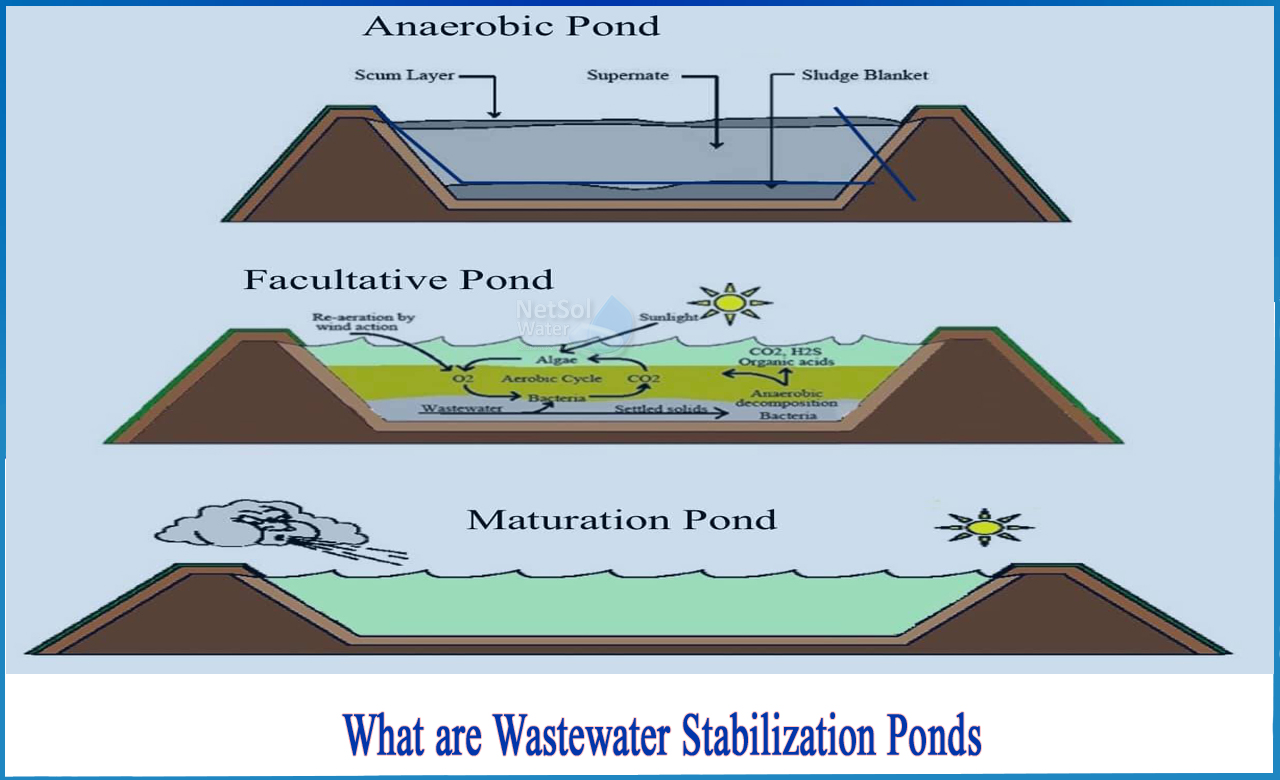What are wastewater stabilization ponds?
Waste or wastewater stabilization ponds (WSPs), also known as stabilization ponds or waste stabilization lagoons, are ponds designed and built for wastewater treatment to reduce organic content and remove pathogens. They are artificial depressions surrounded by earthen structures. Wastewater, or "influent," enters one side of the waste stabilization pond and exits the other as "effluent" after spending several days in the pond and undergoing treatment processes.
Waste stabilization ponds are used for wastewater treatment all over the world, and they are especially suitable for developing countries with warm climates. They are most commonly used to treat sewage and industrial effluents, but they can also be used to treat municipal runoff or storm water. The system could be made up of a single pond or several ponds linked together, with each pond playing a different role in the removal of pollutants.
They are large, man-made bodies of water in which natural processes and the influence of solar light, wind, microorganisms, and algae treat blackwater, greywater, or faecal sludge. The ponds can be used singly or in a series to improve treatment.
Ponds are classified into three types: (1) anaerobic, (2) facultative, and (3) aerobic(maturation), each with its own treatment and design characteristics. WSPs are low-cost for O&M and BOD, and they have a high pathogen removal rate. Large surface areas, however, and expert design are required.
Working of Wastewater Stabilization ponds:
The primary treatment stage is the anaerobic pond, which reduces the organic load in the wastewater. This relatively deep man-made lake is anaerobic throughout its entire depth. Solids and BOD are removed through sedimentation and subsequent anaerobic digestion within the accumulated sludge. Anaerobic bacteria convert organic carbon into methane, removing up to 60% of the BOD in the process.
The effluent from the anaerobic pond is transferred to the facultative pond via a series of WSPs, where additional BOD is removed. Natural diffusion, wind mixing, and algae-driven photosynthesis provide oxygen to the pond's top layer. Because the lower layer lacks oxygen, it becomes anoxic or anaerobic. On the pond's bottom, settleable solids accumulate and are digested. Aerobic and anaerobic organisms collaborate to achieve BOD reductions of up to 75%.
Anaerobic and facultative ponds are intended to remove BOD, whereas aerobic ponds are intended to remove pathogens. Because it is usually the last step in a series of ponds and provides the final level of treatment, an aerobic pond is also known as a maturation, polishing, or finishing pond. It is the shallowest of the ponds, allowing sunlight to penetrate to the bottom and allows photosynthesis to occur.
1-Anaerobic Ponds
BOD removal is the primary function of anaerobic ponds, which can be reduced by 40 to 85 percent. The anaerobic pond, as a whole, serves to:
· As bottom sludge, settle undigested material and non-biodegradable solids.
· Organic material should be dissolved.
· Biodegradable organic material should be broken down.
2-Facultative Treatment Ponds (FTPs)
Facultative Treatment Ponds are the most basic of all WSPs, with an aerobic zone near the surface and a deeper, anaerobic zone. They are intended for BOD removal and can treat water with BOD levels ranging from 100 to 400 kg/ha/day, which equates to 10 to 40 g/m2/day at temperatures above 20°C (MARA and PEARSON, 1998).
Wind can introduce additional oxygen into the water due to vertical mixing. If the pond is too deep and the color is too dark to allow light to penetrate completely, or if the BOD and COD in the lower layer exceed the supply, oxygen cannot be maintained at the lower layers.The concentration of dissolved oxygen varies throughout the day due to the photosynthetic activities of the pond algae. Because of algal activity, the pond will be mostly aerobic during peak sun radiation, while it will be mostly anaerobic at sunrise.
The purpose of the facultative pond is to:
· Further treat wastewater via sedimentation and aerobic oxidation of organic material
· To reduce odor and some disease-causing microorganisms if pH rises.
· Residues should be stored as bottom sludge.

3-Aerobic/ Maturation Ponds
Whereas anaerobic and facultative ponds are intended to remove BOD, maturation or polishing ponds are intended to remove pathogens and retain suspended stabilized solids. The number and size of maturation ponds are determined by the bacteriological quality of the final effluent. HRT, temperature, high pH (> 9), and high light intensity are the primary mechanisms for faecal bacterial removal in facultative and maturation ponds. Viruses and microorganisms are also eliminated. This type of pond, when combined with algae and/or fish harvesting, is also effective at removing the majority of nitrogen and phosphorus from effluent.
Netsol Water are a manufacture of various type of waste water treatment facilities as required by the clients.
Netsol Water is Greater Noida-based leading water & wastewater treatment plant manufacturer. We are industry's most demanding company based on client review and work quality. We are known as best commercial RO plant manufacturers, industrial RO plant manufacturer, sewage treatment plant manufacturer, Water Softener Plant Manufacturers and effluent treatment plant manufacturers. Apart from this 24x7 customer support is our USP. Call on +91-9650608473, or write us at enquiry@netsolwater.com for any support, inquiry or product-purchase related query.



